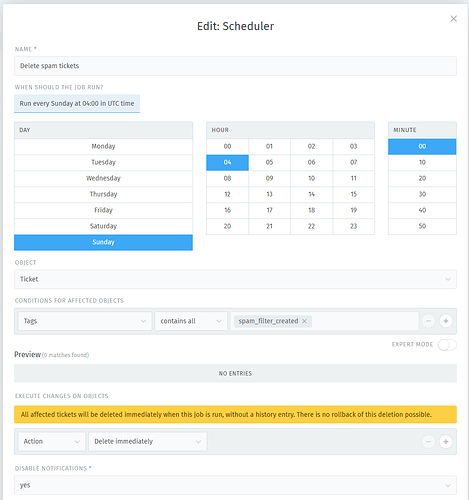So Zammad has this nifty little example macro “Close & Tag as Spam”. But what do we do with those tickets? Here is a solution that might work for you.
Disclaimer: please don’t use the below example in a production environment without fully understanding the details. No warranty. Use at your own risk!
1.) Create a user to access the REST API
First, we will create a user with the permission to only administrate the e-mail-settings.
- Create role “Spam conductor”
- Grant permission to “channel_email”
- Add user “MC Spam”
- Grant role “Spam conductor”
2.) Create webhook
Secondly, we will create a webhook, that is capable of creating e-mail-filters.
“New webhook”
Replace the hostname with a valid URL of your instance. Use the e-mail-address/login of the previously created user.
http://localhost/api/v1/postmaster_filters.json
Custom payload:
{
"name": "Spam Autorule for #{ticket.customer.email}",
"channel": "email",
"match": {
"from": {
"operator": "contains",
"value": "#{ticket.customer.email}"
}
},
"perform": {
"x-zammad-ignore": {
"value": true
}
},
"note": "x",
"active": true
}
3.) Create scheduler 1 of 2
Now we will create a scheduler, that creates the e-mail-filter using the webhook.
“New scheduler”
4.) Create scheduler 2 of 2
Now we will create another scheduler, that deletes the spam tickets after that.
“New scheduler”
Your spam tickets will be deleted after 3 weeks and email filters will ignore incoming mails from the same sender.
Please make sure to regularly check the e-mail filters and adjust your spam filter protection according to that. Having large amounts of e-mail-filters may have performance implications.


